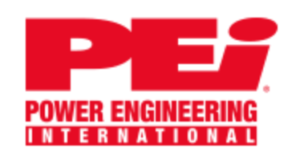 ABJ Drone Academy’s managing director was widely quoted in the article of this name featured in Power Engineering International magazine in an article in January 2018.
ABJ Drone Academy’s managing director was widely quoted in the article of this name featured in Power Engineering International magazine in an article in January 2018.
The following extract is taken from the piece:
Drone companies are beginning to find their feet in the UK. ABJ drones started in the middle of 2017, but their parent company is well established in the US.
Managing Director Mark Caney says the UK operation is to benefit from long experience in utility inspections in several countries, particularly with regards to cell towers, power lines, wind turbines.
Caney says there is a growing awareness of what drones can do but still some confusion on how to go about integration.
“It’s slow in that most of the organisations that could benefit from it are aware that there are benefits but are not really clear how to access them. I’m not really seeing the kind of take up yet that we will see in the next five years.”
 Wind turbine operators would vouch for the value associated with UAS, and it looks a likely source of deployment, with the UK’s leadership role in that sector.
Wind turbine operators would vouch for the value associated with UAS, and it looks a likely source of deployment, with the UK’s leadership role in that sector.
“Most companies are reporting savings of at least 30-60 per cent once they fully deploy drone-based solutions. You don’t have to have humans ascending the turbine, which takes time, and you avoid the safety issues involved in putting a person on an elevated platform. You can send drones up with standard cameras and extreme zoom lenses. They can read bar codes, and such as serial numbers of individual components, so you zero in and can identify everything being observed. It can identify signs of damage, signs of wear, facilitating timely inspections and maintenance.”
“You can also use multi-spectrum cameras, infra-red cameras that can see stress indicators not visible to the naked eye. When you detect something wrong you can send up personnel that can do what is required.”
“What you can’t do with a drone is fix the problem in all cases but you can dramatically cut down the length of time you are looking at the problems.”
Inspection of overhead transmission lines and heat networks is another area of potential gain in building and  maintaining an efficient power infrastructure, in an affordable manner, minimizing labour and identifying problems in advance.
maintaining an efficient power infrastructure, in an affordable manner, minimizing labour and identifying problems in advance.
“You can fly a drone along a power line and do a lidar survey where you can map exactly where the power lines are, the degree of curvature in the cable and significantly you can map the vegetation on either side of the power line. A common problem with power lines is you get a big storm and a tree falls resulting in outages for a significant amount of time.”
“You can also look at line insulation through an infrared red camera to see if there is any evidence of whether it is breaking down or losing its function.”
An important element to the work is the reduction of downtime, as inspections can be carried out without turning off the power. This is opposed to traditional means where a team would be sent up and power would be turned off.
“We also have the capability to fit RFID (Radio Frequency Identification) tags on individual components such as pylons so flying a drone nearby you can immediately identify the asset involved and log that whole process, it allows for a far quicker and cost effective inspection of assets than traditionally done manually.”
As mentioned ABJ have the advantage of already being established in the Americas, and will simply be re-deploying hard won expertise in the EU/UK geographies – “We don’t have to go through a big learning curve that we first had to experience when developing this technology.”
European and UK regulations are set to be introduced this month and on into 2019 and Caney is ideally positioned to see the benefits of this legislation come on board.
“I think those regulations will generally be for the benefit of the technology. I’m personally involved as a member of the BSI Committee that participates with the ISO Standards Group in helping to create those standards. This industry needs regulation but sensible regulation, and fortunately most of the big players involved, including the government, can see there is a lot of money that can be saved by industrial drones being used so they want to develop a reasonable working environment.”
One area the regulatory bodies are examining is centred around ‘line of sight’ or permitted drone reach. Its something a lot of work has gone into as regulatory bodies are understandably cautious about incorporating drones into the overall air traffic control system.
“At the moment operating drones is limited to line of sight where you have the pilot on the ground and you need to be able to see the drones at all times.”
“We are expanding that envelope so you can fly the drones beyond line of sight and make much better use of that flexibility – the main limitation at the moment is the speed of creating regulations because the industry is very dynamic and the technology is going ahead quite rapidly and it’s quite hard to write the regulations fast enough to keep up with it.”




